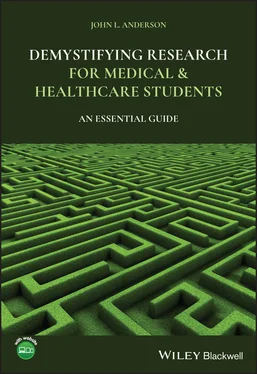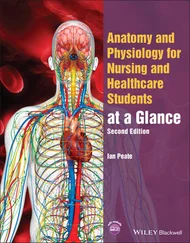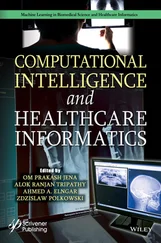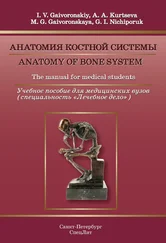Example 2: My Own Experiment
I have always been very impressed by Martin Seligman's work and was eager to do my own research on helplessness. So, when I was at the University of Hong Kong in the 1980s, I informed my staff in the Behavioural Sciences Unit in the Faculty of Medicine of my interests. Within a month, half of them had started doing their own work to replicate Seligman and Hiroto's work! My interests were in people's lifelong exposures to helplessness and how these might contribute to helpless characteristics – with the possible implications for survival from cardiovascular diseases and cancers. So, I set out on my quest. I was on ‘long leave’ in London. I had the necessary equipment built – a computerised control box, a set of headphones, and a four‐button board. I made announcements to medical students and asked for volunteers for my pilot study. I vividly remember my first two subjects.
The first was in the control group– no matter what buttons he pressed, or in what order, or how many times, the noise could not be turned off and the red light would come on to signify failure. I remember him on the last of the 20 trials; he was bashing away at the buttons, frantically trying to find the correct sequence. Afterwards, I interviewed him about his life history of feeling in control or helpless. He was what you could call a ‘straight A student’. He had five As or A*s in his A levels. He had never failed an exam in his life. He could never recall or imagine a situation in which he would not succeed. He said to me, ‘Gosh, John, that was a really interesting trial. I know I didn't get it right in the time, but, I reckon that, with a few more goes, I could have got it right!’ I de‐briefed him about the experiment.
The second subject was in the experimental group.By pressing any button four times he could stop the noise immediately. He learned very quickly how he could stop the noise. I remember him on the last of the 20 trials; he looked fed up. As soon as the noise started be quickly pushed a button four times and the noise stopped. Afterwards, I interviewed him about his life history of feeling in control or helpless. He was also what you could call a ‘straight A student’. He had five As or A*s in his A levels. He had never failed an exam in his life. He could never recall or imagine a situation in which he would not succeed. He said to me, ‘I'm sorry, John, that was a real disappointment. I know that I could stop the noise by pushing a button four time. But it can't be as simple as that, so I don't feel that I really got it right – I didn't understand it!’ I de‐briefed him about the experiment.
This confirmed to me the importance of checking with experimental subjects what they think is going on in the experiment . The first subject felt that he was in control – even though he was in the ‘helpless’ group. The second subject thought he was helpless – even though he was in the ‘control’ group! The difference between them was the sense they made of the trial – how they attributed their part in the trial. Interesting, isn't it? But before I could complete my study, two things happened: (i) my equipment broke down and could not be repaired; and, more disappointingly to me, (ii) Martin Seligman and Judy Garber published their book Human Helplessness: Theory and Applications, in which they expounded in great detail an attributional analysisof learned helplessness – just the sort of thing I believed I had discovered!
Randomisationin experimental designs refers to the process by which your research participants are allocated to one group or another. (It does not, as some people think, refer to the recruitment of the sample.) The idea is that, by assigning participants to groups entirely by chance, this will avoid any biasor preference by the researchers. It is a means of ensuring equity, or fairness, in the distribution of participants to groups. Successful randomisation will ensure that each group of participants is roughly equal in characteristics, and should be roughly equal in their chances of performing in any tasks or tests they are given. When I started out as a researcher, we used to have ‘tables of random numbers’ which we had to refer to for allocations. Nowadays it is all done by computer, and quite rightly so. Never trust any method of randomisation which a human being can control or influence!
First: you state clearly what you intend to do and why – including your hypotheses – if any. At this point, consider whether your study will be a single‐arm experiment or whether it will have more arms?
1 Then you decide who, or what, you want to include in your research, and how you will recruit them.
2 Next, if you have more than one arm, you should randomly allocate your research participants, or ‘subjects’ to the different groups.
3 You conduct the experiment and you note the results.
4 You analyse your results.
5 You disseminate your results by presenting the findings at conferences, or by publishing them in a book or in professional journals.
So, in Hiroto's and Seligman's work, their goals were clearly stated and linked to earlier work. They recruited an appropriate number (96) of psychology students and randomly allocated them to one of the three groups – the ‘control’, the ‘yoked control’, and the ‘helpless’ groups. They began the experiments by the ‘pre‐treatment’ helplessness testing/treatment. Then they tested the subjects' abilities to perform physical or cognitive tasks (performance on a shuttle‐box scenario, anagram testing, or discrimination testing). They measured the final performances of the three groups of subjects and finally they compared them. Then they published their findings and toured the world giving talks about their work before moving on to develop their work further. Nice work if you can get it!
Research is the art of the possible!
1 Fox NS, Brennan JS, Chasen ST. (2008). Clinical estimation of fetal weight and the Hawthorne effect. European Journal of Obstetrics, Gynecology, and Reproductive Biology 141 (2): 111.
2 Hiroto DS. (1974). Locus of control and learned helplessness. Journal of Experimental Psychology 102: 187–193.
3 Hiroto DS and Seligman MEP. (1974). Generality of learned helplessness. Journal of Personality and Social Psychology 31(2): 311–327.
4 Kolata G. (1998). Scientific myths that are too good to die. New York Times (6 December).
5 Landsberger HA. (1958). Hawthorne Revisited. The New York State School of Industrial and Labor Relations: Ithaca.
6 Levitt SD and John AL. (2011). Was There Really a Hawthorne Effect at the Hawthorne Plant? An Analysis of the Original Illumination Experiments. American Economic Journal: Applied Economics 3(1): 224–238.
7 McCarney R, Warner J, Iliffe S, et al. (2007). The Hawthorne effect: a randomised, controlled trial. BMC Medical Research Methodology 7: 30.
8 Renee D. (1959). Mirage of Health. Harper & Row Publishers: New York.
9 Seligman M. (1975). Learned Helplessness: On Depression, Development, and Death. WH Freeman and Company: San Francisco.
10 Tuckett D. (1976) An Introduction to Medical Sociology. Tavistock Publications: London.
CHAPTER 3 Experimental Quantitative Approaches: Real‐Life (Field) Experiments
Introduction
It is time now for us to move out of the laboratory. Let's consider some experiments which have been done in real‐life situations.There have been experimental studies which have been set up in real‐life situations – in everyday settings.
Читать дальше












